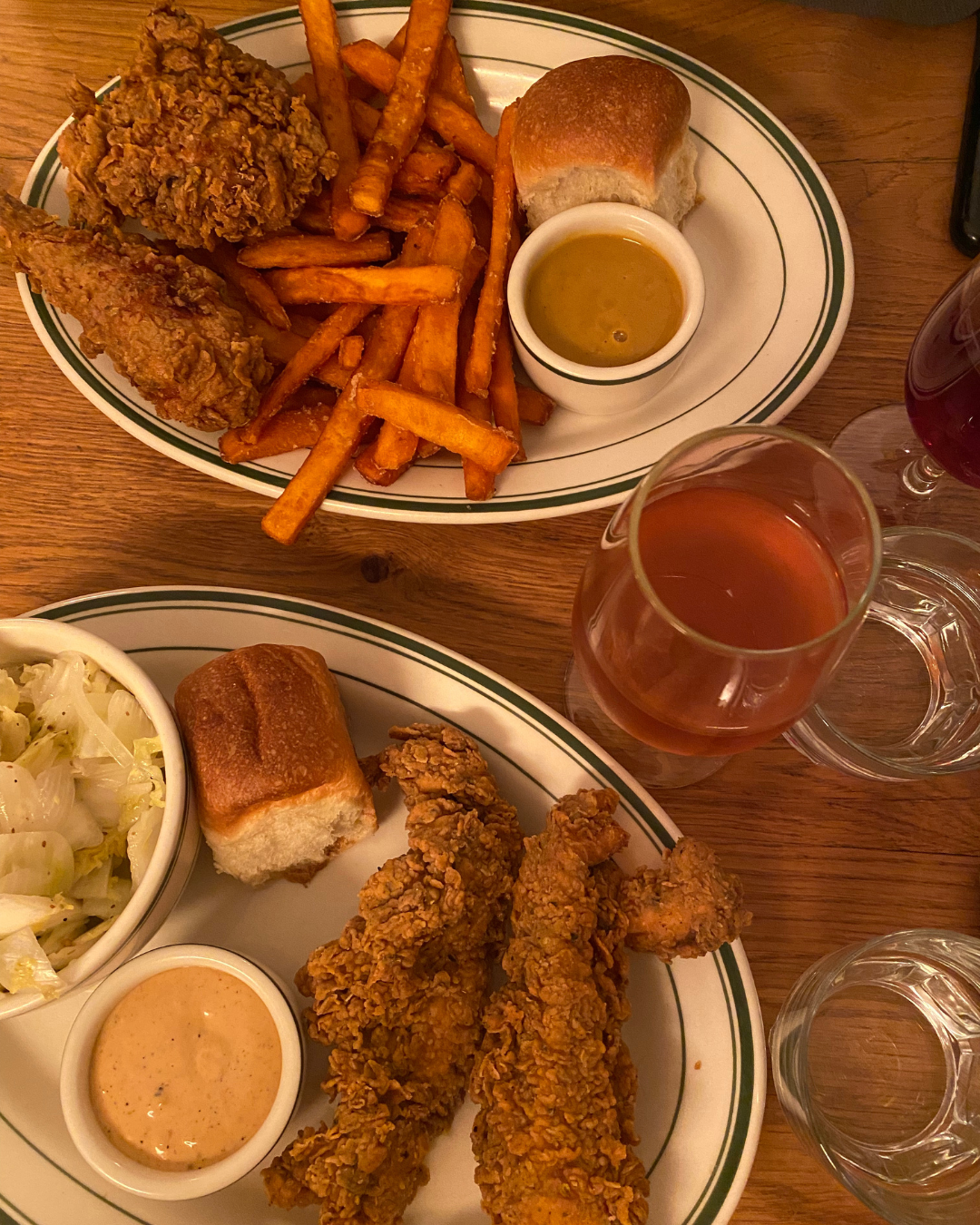the rosé of white wine
a photo from the best day of my life
This blog is sponsored by a weekend filled with orange. Yes, some of the “signs” are a reach, but the universe committed.
My Sunday started with hundreds of corgis (they’re basically orange, let me have this) at Le Bone Apart in the 4e. It’s a dog café, a place where you and your four‑legged friend can enjoy coffee and pup cups side by side. They hosted a “Corgichon” (a play on of words for cornichon which means pickles in French). The event included a whipped‑cream race, corgi grand prix, and ofc, me on the curb petting any loaf that came near me.
When the best event of my life ended, I wandered around Paris and stumbled into a vide‑dressing (basically a closet clean‑out). I left with vintage terracotta pants (orange again). The sale was run by IDL, an association that puts on events and sends profits to outreach and meal programs. Follow them on Instagram if you want to catch the next one.
The final sign was the obvious one: orange wine at dinner. I tried Bucks: fried chicken and wine, which speaks to my US heart and adopted french taste. I ordered Zénith by Les Funambules: a beautiful orange wine with citrus and honey on the nose, dry and fresh with a little spice. Could I have finished a bottle by myself? Yes. Did I? Sadly no, my boyfriend would not let me.
So, orange wine. Let’s get into it.
Where does orange wine come from?
I found orange wine recently; it was my summer obsession, and since I’m still not over it, it’ll probably be my fall one too. Orange wine is often tagged “bobo” (French for hipster) and sometimes “the forgotten wine.” It’s been around since roughly 4000 B.C. in what’s now Georgia. The style was revived in the 1990s in parts of Europe and has kept growing with the rise of natural wine. It’s linked to sustainability and a return to older methods- two trends both having their moment.
Is orange wine made out of oranges?
Nope. Still grapes. The name and the color are misleading. I like to call it the rosé of white wine because the logic is similar. Quick reminder: rosé isn’t red and white mixed together; it’s made like a red( grape skins in contact with the juice) but for a shorter time. Orange wine is white grapes treated the same way: the juice macerates with the skins, picking up color, texture, and a little tannin, which is why the color turns that beautiful amber‑orange.
an amazing meal at bucks
What does it taste like?
It depends on the grape, how long the skins stay in, and how it’s made- but you can expect the freshness and minerality of a white with a bit of red‑style tannin. You’ll often get citrus or stone‑fruit notes, sometimes honey, spice, or a little nuttiness. The flavors can go a hundred ways, but you can always count on complexity. I call it “funky” in a good way.
Just a trend or here to stay?
So yes, my weekend all led to one simple point: orange wine is white wine with it’s skins- complex, fresh, and worth a try. If you decide to try your first glass, tell me what you think. And as always: drink with joy, but not too much, because we’re 30 now, even if we still pet every corgi we see.


